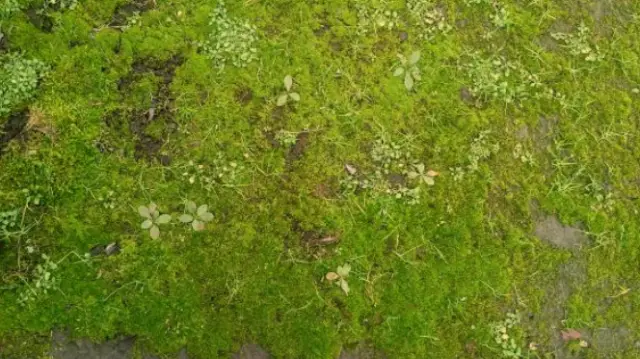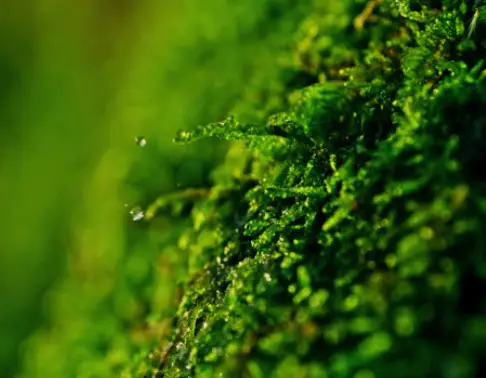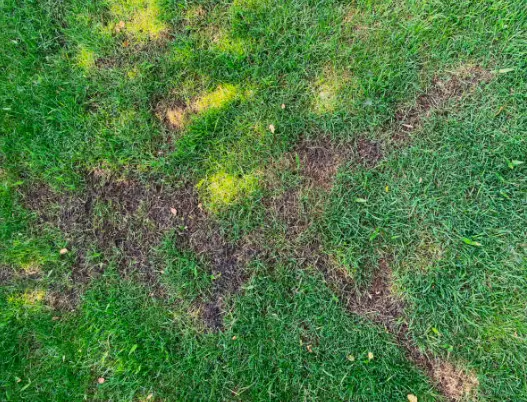Are you sick and weary of having to maintain a regular grass lawn all the time? A lovely, velvety-green substitute that is low-maintenance and ecologically friendly is provided by moss lawns. This thorough tutorial will walk you through every step of creating and maintaining a lush moss lawn, from site preparation to upkeep.
Why Choose a Moss Lawn?
Let us examine the many advantages of embracing this unusual groundcover before getting into the specifics of growing moss lawn construction:

Grow Moss Lawn
1. Low maintenance: Moss lawns require minimal upkeep compared to traditional grass lawns. They don’t need regular mowing, watering, or fertilizing, saving you time and money.
2. Drought-Resistant: Mosses are remarkably resilient and can survive periods of drought by going dormant and reviving when moisture returns.
3. Eco-Friendly: Moss lawns don’t require harmful herbicides or pesticides, making them an environmentally conscious choice.
4. Unique Aesthetic: With their soft, lush texture and vibrant green hues, moss lawns add a touch of whimsy and natural beauty to any outdoor space.
5. Erosion Control: Moss lawns help prevent soil erosion by creating a dense, matted layer that holds soil in place.
Choosing the Right Moss Species
When it comes to treatments on lawns, not all mosses are created equal. The following species are most frequently used for moss lawns:

1. Fern Moss (Thuidium delicatulum): a robust, fast-growing moss that forms a dense, velvety carpet.
2. Haircap Moss (Polytrichum commune): Known for its distinctive, hair-like stems and vibrant green color.
3. Cushion Moss (Leucobryum glaucum): A compact, dense moss with a distinct whitish-green hue.
Think about the ideal location’s soil type, sun exposure, and climate while choosing your moss species. Making the ideal decision for your particular area can be aided by speaking with a nearby nursery or gardening specialist.
Site Preparation
For your moss lawn to successfully establish, the location must be properly prepared. To establish the perfect environment for your moss to flourish, follow these steps:

1. Eliminate Existing Vegetation: Remove any grass, weeds, or other plants from the area where you plan to install your moss lawn. This can be done manually or by using an herbicide (if necessary).
2. Level the Soil: Moss prefers a level surface, so use a rake or other tools to smooth out any bumps or depressions in the soil.
3. Improve Drainage (if necessary): Moss lawns require well-draining soil to prevent waterlogging. If your soil is heavy or compacted, consider adding amendments like sand or grit to improve drainage.
4. Acidify the Soil: Most mosses thrive in acidic soil conditions with a pH range of 5.0 to 6.0. You can test your soil’s pH and adjust it accordingly by adding sulfur or other acidifying agents.
5. Prepare the Surface: Once the area is cleared and leveled, lightly roughen the soil surface with a rake or cultivator. This will help the moss rhizoids (root-like structures) anchor themselves to the soil.
Moss Propagation
For your lawn, there are two primary ways to propagate moss: division and spore propagation.
Division
Obtain moss clumps or mats from a reputable nursery or collect them from a natural source (with permission, if necessary).
Carefully separate the moss into smaller pieces, ensuring that each division contains both moss and rhizoids.
Plant the divisions directly onto the prepared soil surface, spacing them approximately 6–12 inches apart.
Water the area thoroughly after planting.
Spore Propagation
Collect moss sporophytes (spore-bearing structures) during the appropriate season for your chosen species.
Allow the sporophytes to dry completely, then gently crush them to release the spores.
Mix the spores with a small amount of buttermilk or beer (the sugars help the spores germinate).
Spread the spore mixture evenly over the prepared soil surface.
Keep the area consistently moist until the spores germinate and establish themselves.
Select the approach that best fits your needs and available resources, as each has benefits and drawbacks.
Watering and Maintenance
After your moss lawn has established itself, it needs to be properly watered and maintained in order to stay vibrant and healthy. Here are some pointers:
Watering
Moss lawns require consistent moisture, especially during the establishment phase.
Water the area deeply, ensuring that the soil is saturated to a depth of several inches.
Avoid letting the moss dry out completely, as this can cause it to go dormant or die.
During periods of drought or extreme heat, increase the frequency of watering to prevent desiccation.
Maintenance
Remove any fallen leaves, twigs, or debris from the moss lawn to prevent smothering.
Gently rake or sweep the moss periodically to remove any dead or loose material.
Avoid walking on the moss lawn excessively, as this can compact the soil and damage the moss.
If bare spots develop, fill them in with new moss divisions or spore propagation.
Controlling Weeds and Pests
Moss lawns are generally resistant to weeds, but occasional hand-pulling may be necessary.
Avoid using chemical herbicides, as they can harm the moss.
Common moss pests include slugs, snails, and certain insects. Use natural deterrents or remove pests by hand when possible.
Seasonal Care
In colder regions, moss may go dormant during the winter months, turning brown or yellow.
Avoid disturbing the moss during this period, as it will revive once warmer temperatures return.
In early spring, gently rake the moss to remove any dead material and encourage new growth.
You can make sure that your moss lawn stays lush, healthy, and colorful for many years to come by adhering to these watering and management requirements.
Incorporating Moss Lawns into Your Landscape Design
Moss lawns are not only functional groundcovers but also beautiful design elements that can enhance the overall aesthetic of your outdoor space. Here are some ideas for incorporating moss lawns into your landscape:

1. Pathways and Stepping Stones: Create a whimsical, meandering path through your moss lawn by strategically placing stepping stones or pavers.
2. Shady Retreats: Moss thrives in shaded areas, making it an ideal choice for creating a cool, serene retreat under trees or in other partially shaded spots.
3. Accent Areas: Use moss lawns to highlight specific features in your landscape, such as a water feature, garden sculpture, or seating area.
4. Borders and Edging: Moss lawns can serve as a soft, natural border or edging for garden beds, pathways, or other landscape elements.
5. Combination Plantings: Combine your moss lawn with other shade-loving plants, such as ferns, hostas, or woodland wildflowers, for a lush, naturalistic look.
Recall that moss lawns are adaptable and may be designed to complement a variety of landscape aesthetics, including modern and rustic. You can easily incorporate this environmentally friendly ground cover into your outdoor living area with a little imagination.
Conclusion
A satisfying and environmentally friendly project, growing moss lawns improves the aesthetics of your outdoor area while also promoting a healthier atmosphere. You will be well on your way to reaping the rewards of a lush, low-maintenance moss lawn by following the instructions provided in this book, from site preparation to regular care.
Accept the special appeal of moss and let your lawn become a living example of environmentally conscious living. Your moss lawn can thrive with time and attention, giving you a velvety, smooth surface for your outdoor activities and acting as a constant reminder of the wonders of nature.




